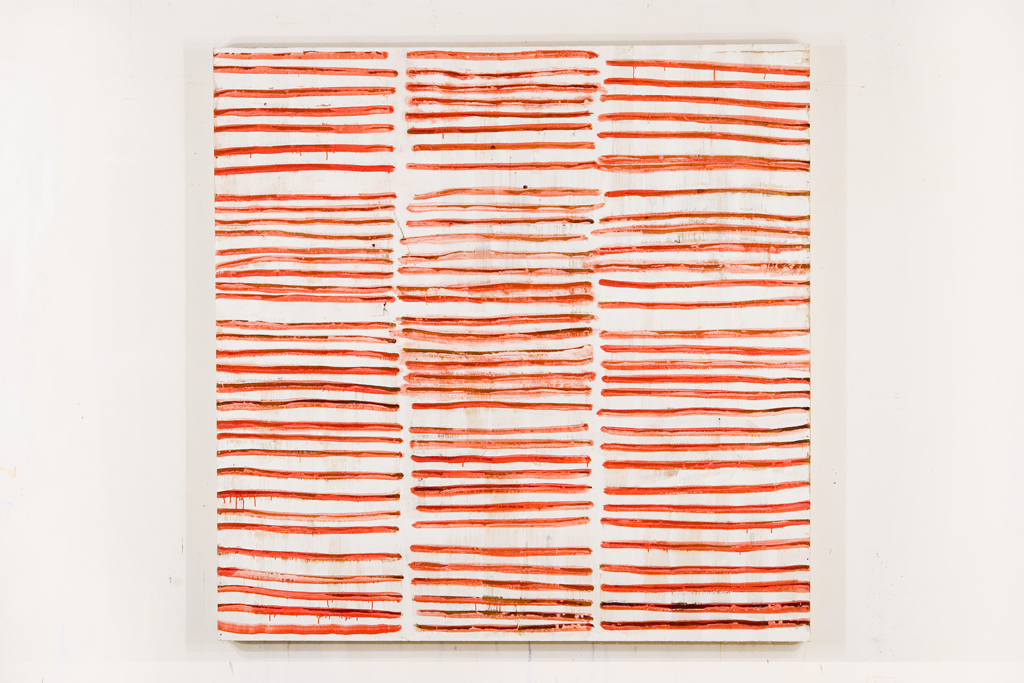From The Collection: Don Maynard
White Landscape, encaustic on panel
Don Maynard lives and works in Kingston, Ontario. His art practice includes painting, sculpture, and multi-media installations. Previous public art works include Stand of Birch, Archive and Fallen Star for the City of Ottawa and Wave for the City of Toronto. Maynard shows nationally and internationally. He is the recipient of a Pollock-Krasner Foundation Grant and a Chalmers Fellowship. Previous solo exhibitions include Tidal Mass, and Franken Forest at the Agnes Etherington Art Centre in Kingston, and Franken Forest at the Robert McLaughlin Gallery in Oshawa. Maynard is represented by Newzones Gallery in Calgary, Alberta, and Sears-Peyton Gallery, New York, New York.
Red Waves, 60” x 60”, encaustic on panel
You tackle a wide range of ideas with your work and move fluidly between mediums - working in kinetic sculpture, multi-media installation, and painting. Can you tell me a little about the difference you feel when working with one or the other? How do these mediums allow you to explore ideas?
The themes share common ground. They can be very different in scale, which affects how the audience may engage with them. My larger installations are immersive such as Tidal Mass and Skeye Projects. With these installations or performances it is important for me to maintain a sense of intimacy. I hope for a kind of one to one relationship the installation will have the with the viewer. I want to achieve this relationship with all my work, from small paintings to large sculptures.
My intention is not to overwhelm the audience by dominating the space; I want to invite them in and envelop them. Larger works allow me to expand my creative thinking into areas of theatre and architecture, as well as create opportunities for collaborations with other artists involved in film, music, and movement. My initial vision for these collaborative works typically remains pretty constant. Their execution can be very involved and labour intensive, however my objective is to make them appear to be very easy - like watching a cloud go by. There is an ephemeral quality to these works. For instance, Tidal Mass was initially shown for only 24 hours, one turn of the earth and Skeye Projects performances are typically less than one hour.
Image from Skeye Projects, a continuing experiment in altering visual experiences and perceptions. skeyeprojects.com
Over the last year I made two wall installations using simple materials such as mirrored mylar and burned doweling. These pieces are about nature and the behavior of light. I am curious how these realities might blend together, I want people to question what is real –and what might be physical or rather a cast shadow or a mirrored reflection of itself.
I recently posted Covid Kinetics. I created these small kinetic sculptures with the intention of showing them online. They were fun to do. I only allowed myself the use of materials from Dollar Stores and generally conceived them on a Sunday. I prefer them to be viewed in person but it is interesting to produce something and then immediately show it online. I had never done this before so I was curious more about my own reaction to the process than that of the audience. They are political and part of my on going response to Covid.
I paint like I am part of an audience; I am a viewer waiting for the final act.
Is painting is a very different type of practice for you than creating video or dimensional installation?
Paintings are different from these other types of works. I almost never start with an idea in mind. I have very little desire in controlling what happens. I paint like I am part of an audience; I am a viewer waiting for the final act. I don’t have much to do with it on a conscious level. I like watching it unfold and then at some point I decide that it all seems right and I stop.
I am working on a group of small encaustics right now. I will continue with these through the winter.
Installation shot from Stand of Birch, Cyrville Station, Ottawa, 2018. Stand of Birch, stainless steel, 22’ x 15’ x 32’, was commissioned for Ottawa’s OLRT line. The intertwining and crossed branches make reference to the connected relationships that are essential to the success of the vibrant Ottawa community.
Your work seems to be primarily concerned with the natural world and our relationship to it. Much of your installation work posits a direct questioning of that relationship or plays with distorting it, while your paintings seem more a celebration of the forms and beauty found in the natural world. Can you say more about this?
I would say that is accurate. The larger installations have more of a physical presence, they take up space and they change with the light and then there is viewer’s ability to move through them. There is a relationship between objects and our own physical bodies. The bigger the object the more we recognize it as something in space and how it relates to our own bodies.
I think this is one of the main differences between sculpture and painting. Sculpture is about the world and painting is the illusion of the world. Painting is more plastic and in a way more dream-like. With paint I can change the material very quickly to make a new idea or create another emotional direction in the work.
Tidal Mass, 29" x 32' x 54, NGB Studios, 1,850 used fluorescent light bulbs, steel, 250 compact fluorescent light bulbs, steel rods, 2007. When I was working on Tidal Mass I was reading The Weather Makers by Tim Flannery. Inspired by the melting of the polar ice caps, Tidal Mass floods the entire floor of a warehouse with thousands of used fluorescent light bulbs. The piece is illuminated from both below and above, giving the impression of undulating waves.
How did you learn about encaustic? What does this particular medium allow you to do that is different from the way you manipulate other types of materials such as paper or mylar?
Weather Report, 60” x 60”, encaustic, oil, and plexiglass on wood panel
In the mid 80s, I started melting crayons and oil pastels and painting with them. I had no idea what I was doing at the time and I thought I had invented something pretty cool. I now find this rather funny but encaustic was not a popular contemporary painting medium at that time. Besides my own experimentation, I learned most of my technical tips through R&F or artists who were associated with them.
Mylar is similar to wax in terms of how its surface reflects light. It’s a very robust material and can handle a lot of abuse. You can push around the paint and inks in different ways achieving translucencies similar to those of wax by painting on the back or building up layers of the material. With collage I can build these paintings quickly to any size I want.
Curved Forms, 82” x 86”, encaustic on panel, 2012
What are your major influences? Where do your ideas come from?
Abstract expressionism, minimalism, materials, music, dreams, mysticism, nature, humane relationships, personal and global issues.
Can you tell me about one of your favorite pieces? What was it about this painting or installation, etc. that made it so successful?
I like a lot of my works for different reasons. Performance and installations are satisfying in that I can work on them slowly over a long period of time. They are shown for a relatively short instance and then they disappear. I like that it takes so long to make them and then they are gone. In a sense I really enjoy the memory of the piece rather than the piece itself.
Paintings are different. I like paintings that change overtime. A good painting grows with me or maybe I grow with it. It’s asking a lot of a painting to mean something to you over your entire adult life, but that is how I measure a successful painting.
Checkered Romance, 11” x 16”, encaustic on paper
To see more of Don’s work, visit his website don-maynard.com.








